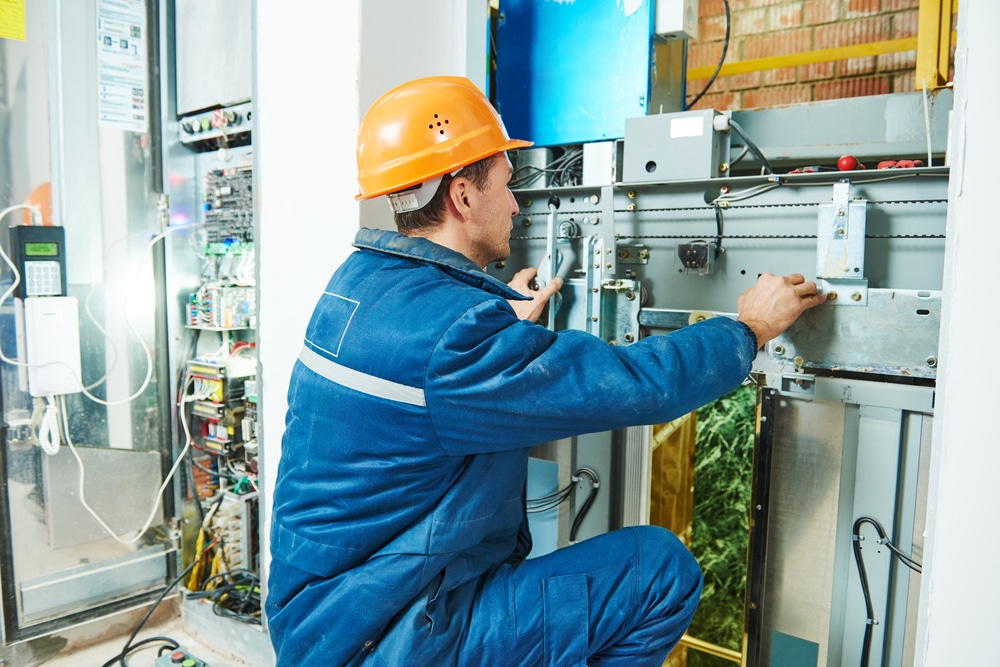Checking Out the Comprehensive Measures Needed for Lift Maintenance
In the world of building maintenance, making certain the appropriate performance and safety of lifts is vital. By addressing essential elements such as aggressive maintenance routines, safety and security checks, and emergency preparedness, a complete understanding of the intricacies involved in lift upkeep can lead to boosted performance and safety.
Routine Assessments
When it involves ensuring the durability and security of your lift system, regular evaluations are vital. These regular checks play a crucial role in identifying any prospective problems prior to they intensify right into significant troubles, ensuring the smooth and safe operation of the lift. By conducting regular inspections, maintenance groups can proactively address damage, faulty components, or any other issues that might endanger the lift's efficiency or security.
During these examinations, trained specialists completely examine different aspects of the lift system, consisting of mechanical components, electrical systems, safety and security functions, and total structural stability. By spotting and resolving issues early on, these assessments help stop pricey repair work, downtime, or safety and security hazards, eventually expanding the lifespan of the lift system and making sure the well-being of its individuals.
Proactive Maintenance Schedules
Implementing positive upkeep timetables is vital for taking full advantage of the performance and longevity of lift systems. By adhering to an aggressive maintenance method, lift proprietors can resolve potential problems prior to they intensify right into significant problems, ultimately decreasing downtime and expensive fixings. Proactive maintenance includes routine examinations, lubrication of moving parts, testing security attributes, and changing used parts. These set up maintenance tasks not only assist in protecting against breakdowns however likewise add to maintaining the lift's efficiency at optimal levels.
A well-structured aggressive maintenance schedule should lay out details jobs, frequencies, and responsible employees. It is crucial to adhere to maker suggestions and industry standards when developing these timetables to ensure the lift runs safely and effectively. Additionally, recording maintenance tasks and keeping in-depth records can give important understandings into the lift's efficiency in time, assisting in making and recognizing trends notified maintenance decisions.

Security Conformity Checks
Making sure safety conformity with comprehensive checks is extremely important in preserving lift systems' reliability and securing user wellness. Safety conformity checks involve a thorough examination of different components, consisting of electrical systems, mechanical parts, emergency situation brakes, doors, and other essential security attributes. These checks are vital to identify any kind of potential dangers or malfunctions that might endanger the lift's operation and placed individuals in jeopardy.
Routine safety and security compliance checks must be conducted by certified specialists in adherence to market regulations and requirements. These you could check here checks aid in finding issues early, permitting timely repair services and preventive maintenance procedures to be applied. Moreover, maintaining thorough documents of safety compliance checks is critical for tracking the lift system's performance in time and showing conformity with safety and security regulations.
Tools Upgrades and Innovation
Enhancing lift systems with equipment upgrades and innovation is necessary for enhancing efficiency and safety and security criteria in vertical transport. As innovation breakthroughs, older lift systems may become obsolete, causing decreased integrity and prospective safety threats. By spending in equipment upgrades and innovation, building owners can guarantee that their lifts fulfill current industry standards and laws.

Along with functional advantages, devices upgrades and modernization projects can likewise boost the aesthetics of the lift, giving an extra appealing and contemporary experience for guests. Ultimately, purchasing lift upgrades and innovation is a proactive method in the direction of ensuring the durability, safety and security, and efficiency of vertical transportation systems.
Emergency Readiness Preparation
An effective emergency preparedness plan is resource critical for guaranteeing the security and quick feedback in instance of unexpected events including lift systems. Emergency situation readiness preparation for lift systems entails a systematic method to mitigate dangers, make sure traveler safety and security, and decrease downtime during emergencies.
Key components of an emergency preparedness plan for lifts include clear recommended you read communication procedures, routine training for lift operators on emergency procedures, and routine drills to check the performance of the strategy. lift maintenance contract. Additionally, the plan ought to describe specific roles and responsibilities for all stakeholders involved, including building management, maintenance personnel, and emergency situation -responders
In case of a lift breakdown or entrapment, having a well-defined emergency plan can help in collaborating a efficient and prompt response to ensure the safety and well-being of passengers. Prompt interaction, accessibility to emergency equipment such as communication tools and emergency situation lights, and expertise of emptying procedures are vital aspects of an extensive emergency situation readiness plan for lift systems. By prioritizing emergency preparedness planning, structure supervisors can improve the overall security and reliability of their lift systems.
Verdict
Finally, the detailed procedures required for lift maintenance consist of regular inspections, aggressive upkeep schedules, safety and security compliance checks, tools upgrades and innovation, and emergency preparedness preparation. These steps are important for ensuring the safety and security, reliability, and performance of lifts in different setups. By executing these measures, lift owners can minimize the danger of crashes, prolong the life-span of their equipment, and abide by industry guidelines.

Throughout these evaluations, educated professionals completely check out various elements of the lift system, consisting of mechanical components, electric systems, safety and security features, and overall structural honesty.Making certain safety compliance with detailed checks is paramount in maintaining lift systems' dependability and securing individual wellness. Maintaining thorough documents of safety compliance checks is essential for tracking the lift system's performance over time and demonstrating compliance with security policies.
By prioritizing emergency preparedness planning, building managers can enhance the overall safety and reliability of their lift systems.